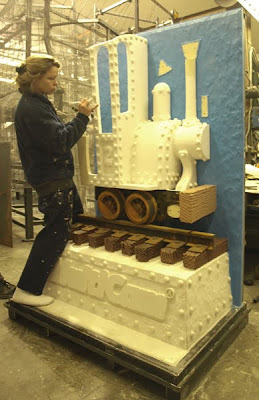We have a booth reserved in a car show towards the end of the month. It is a chance to market our three dimensional signs and sculptures to a whole new audience. In preparation for the show I am adding some new pieces to our display. Our MultiCam router will of course be used in a big way to make them. While some of the pieces we have on display are quite large and complex(and expensive) we wanted some things that would appeal to those with somewhat less of a budget. Every car affectionado has a shop of some kind and of course needs a sign to label it as their own. I had to look no further than my own tool box for inspiration.
 The vector file took only minutes to make in EnRoute. I made a second copy of the file and then flipped it for the back side of the wrench - except the name so it didn't read in reverse. Once I had the vector files done it was time to create the relief. I built each component of the wrench separately then merged them together at the last minute. Once it was all done I checked it as a preview. Here's a screen capture of that render.
The vector file took only minutes to make in EnRoute. I made a second copy of the file and then flipped it for the back side of the wrench - except the name so it didn't read in reverse. Once I had the vector files done it was time to create the relief. I built each component of the wrench separately then merged them together at the last minute. Once it was all done I checked it as a preview. Here's a screen capture of that render. I then sent the cutting file to the router using only a 3/8" ball nose bit with a 90% overlap to make the file run faster while still retaining nice detail. Even though the file was 4 feet by almost two feet it ran in about an hour - while I was off doing other things. I glued it up back to back in a couple of minutes. Tomorrow I'll take it out of the clamps and get to finishing this oversize wrench.
I then sent the cutting file to the router using only a 3/8" ball nose bit with a 90% overlap to make the file run faster while still retaining nice detail. Even though the file was 4 feet by almost two feet it ran in about an hour - while I was off doing other things. I glued it up back to back in a couple of minutes. Tomorrow I'll take it out of the clamps and get to finishing this oversize wrench.
Stay tuned...
-dan















































